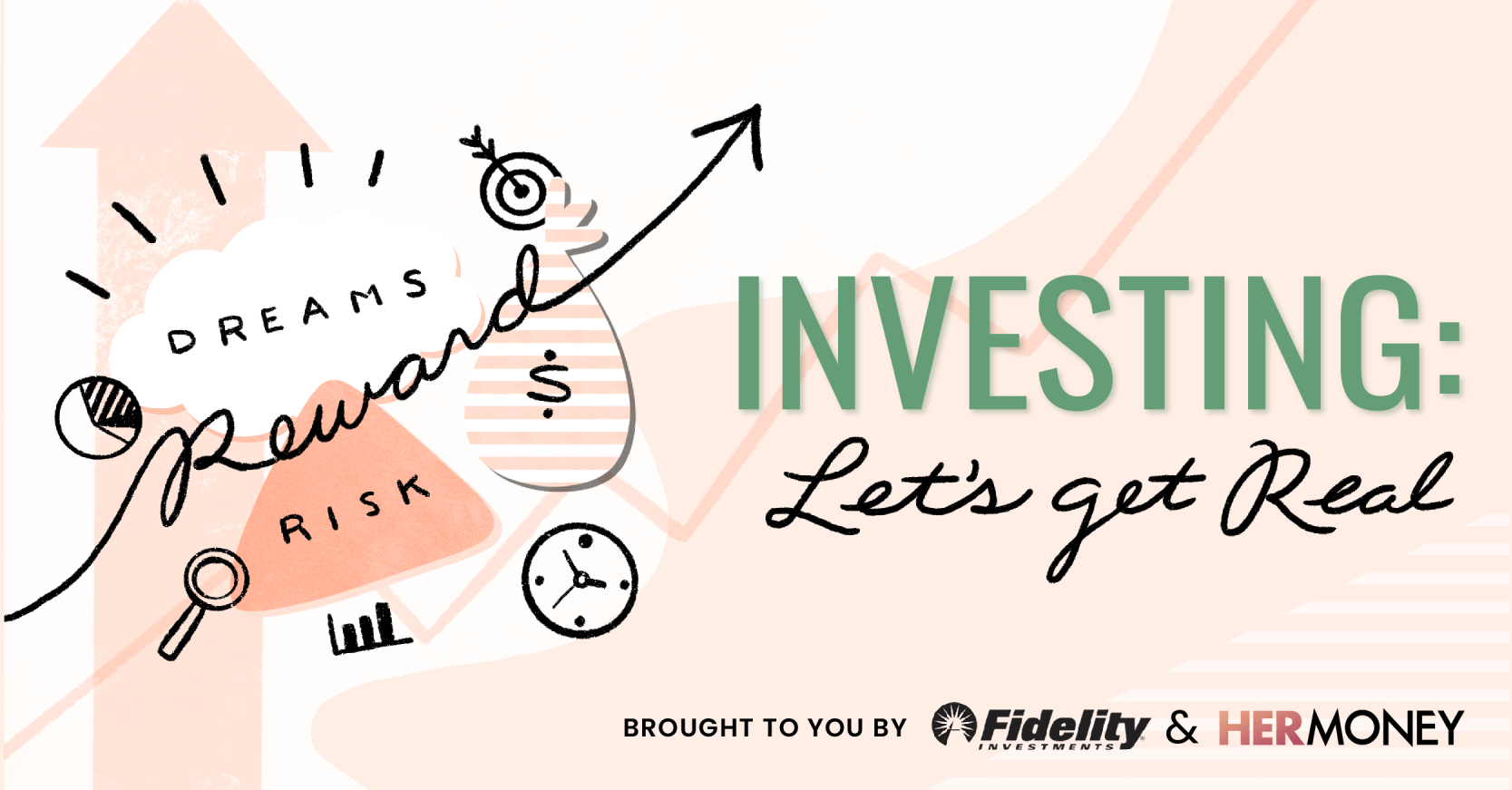
Flush with pandemic cash? Just came into a financial windfall? Would you know how to invest an extra $25,000? Fidelity asked that question and only 47% of female respondents said yes.
Unfortunately, women have long been kept out of important investing conversations and largely ignored by the financial industry. But if you’re unsure how to invest more of your money (or where to get started) don’t fret. We’ve got all the details on how you can make it happen.
Investing: Let’s Get Real is proudly sponsored by Fidelity Investments. Fidelity understands what women really need to know about investing. That’s why they’ve created a special event with curated investing resources to help guide women and keep us on track for our future goals. Click here to learn more.
SET YOUR GOALS
Regardless how much you have to invest, before you begin investing you need to determine what you want to accomplish and when. “Do I want to buy a house? Am I trying to save for my kid’s college? What is your goal, and what is the timeline?” says Ryan Viktorin, a vice president and financial consultant at Fidelity. Your goals + time horizon will dictate the kind of investments you make.
If you’re investing for a short-term goal, like the down payment for a home, you’d like to buy in a few years, you’re better off taking less risk. But if you’re investing for retirement and won’t need that money for twenty-five years, you can afford to take more risk in the markets. “What is your goal and when? After those two things are decided, you can start to get into the how,” says Viktorin.
DECIDE YOUR INVESTMENT STYLE
Are you the DIY type? Do you prefer to set-it-and-forget-it? Or is hand-holding the only way you’ll sleep at night? To start your investment journey off on the right foot, you’ll need to determine the type of investor you want to be.
For those who need advice, there’s good news. You don’t have to be wealthy or have hundreds of thousands of dollars to get help from a financial advisor. Nor does the cost of help have to break the bank. Many financial advisors won’t charge you for an initial conversation, and will customize a plan to meet your specific goals and budget. “You don’t have to feel like you have to go it alone no matter what size your investment is,” said Viktorin. “The level of complexity will dictate the level of support you need.”
Would-be investors who prefer to put their investments on autopilot have options, too. Robo advisors, which are a low-cost digital option, are particularly popular among the set-it-and-forget-it crowd. These are digital platforms that walk you through a series of questions about your goals, time horizon, and risk tolerance, and then select investments for you. Many of these platforms will automatically rebalance your portfolio when it gets out of whack. “With Fidelity’s version, you enter specific information and you are off to the races,” says Viktorin. “Robo advisors are for people who want to be completely online and be able to put their investments on autopilot.” With a hybrid robo advisor, you get the best of both worlds: digital investing and human help.
The riskiest way to invest when you’re just starting out is to go it completely alone. To find success, you have to educate yourself about how the financial markets work, all its nuances, and then select investments based on that knowledge. This is where trouble can arise in if you aren’t careful. From stocks to bonds and everything in between, there are a lot of options. Some are riskier than others. Other investments cost more. You don’t want to end up in a situation wherein you make a bad bet and lose your windfall, or let fees eat away at your returns. If you decide to go the DIY investing route, it’s important to wait until you have a solid understanding of what investing entails. “Does the investment truly support what you need from a financial planning perspective? I always bring it back to what you’re trying to do,” says Viktorin.
EXPECT VOLATILITY
Investing can be an extremely emotional experience. One day your stocks are surging, the next they’re declining, which can cause uninformed investors to panic sell, or at the very least have some sleepless nights. There’s a reason so many people buy stocks high and sell them low: they react to fluctuations in the market. A better strategy is to take emotions out of the investing equation and stay the course no matter how many points the Dow drops on a given day. To do that you need to create a sound investment plan based on your goals, time horizon, and appetite for risk. When the markets get bad or the headlines scream doom and gloom, you’ll be better equipped to resist the temptation to sell. Not convinced? Ask all the investors who didn’t unload their portfolios during the Great Recession more than a decade ago if staying the course paid off. (They’ll tell you that they recouped their losses and then some.) “When things get really scary from a market perspective or life perspective, don’t hesitate to talk to somebody,” says Viktorin. “Staying the course is effective but can be mentally challenging.”
ASK FOR HELP
No one knows everything about investing, no matter how long they’ve been doing it. And when you’re just starting out, the best way to learn is by asking questions, seeking help, and getting advice. Even investing DIY-ers need some hand holding from time to time. “Whether or not it’s your first $25,000, don’t hesitate to ask questions and ask for help,” says Viktorin. “Don’t start with, ‘I can’t do this.’ You can do this. Don’t be afraid to lean into it.”
Sometimes money conversations can be tough to navigate. Fidelity has a rundown on the top 5 questions to ask yourself (and others!) to help you save and invest. You got this, and Fidelity’s got you. Click here for action-oriented resources that will help you invest more now.










